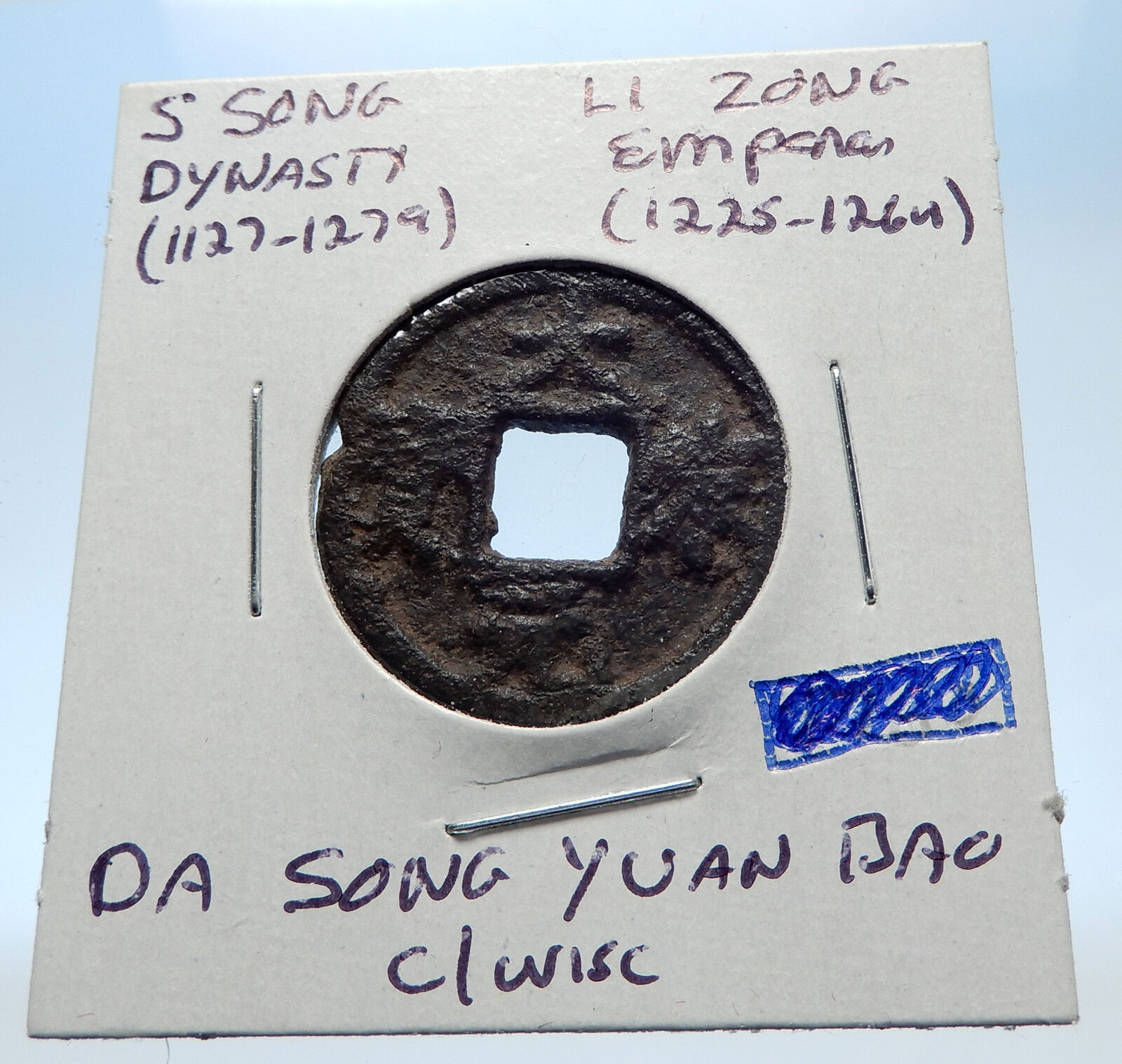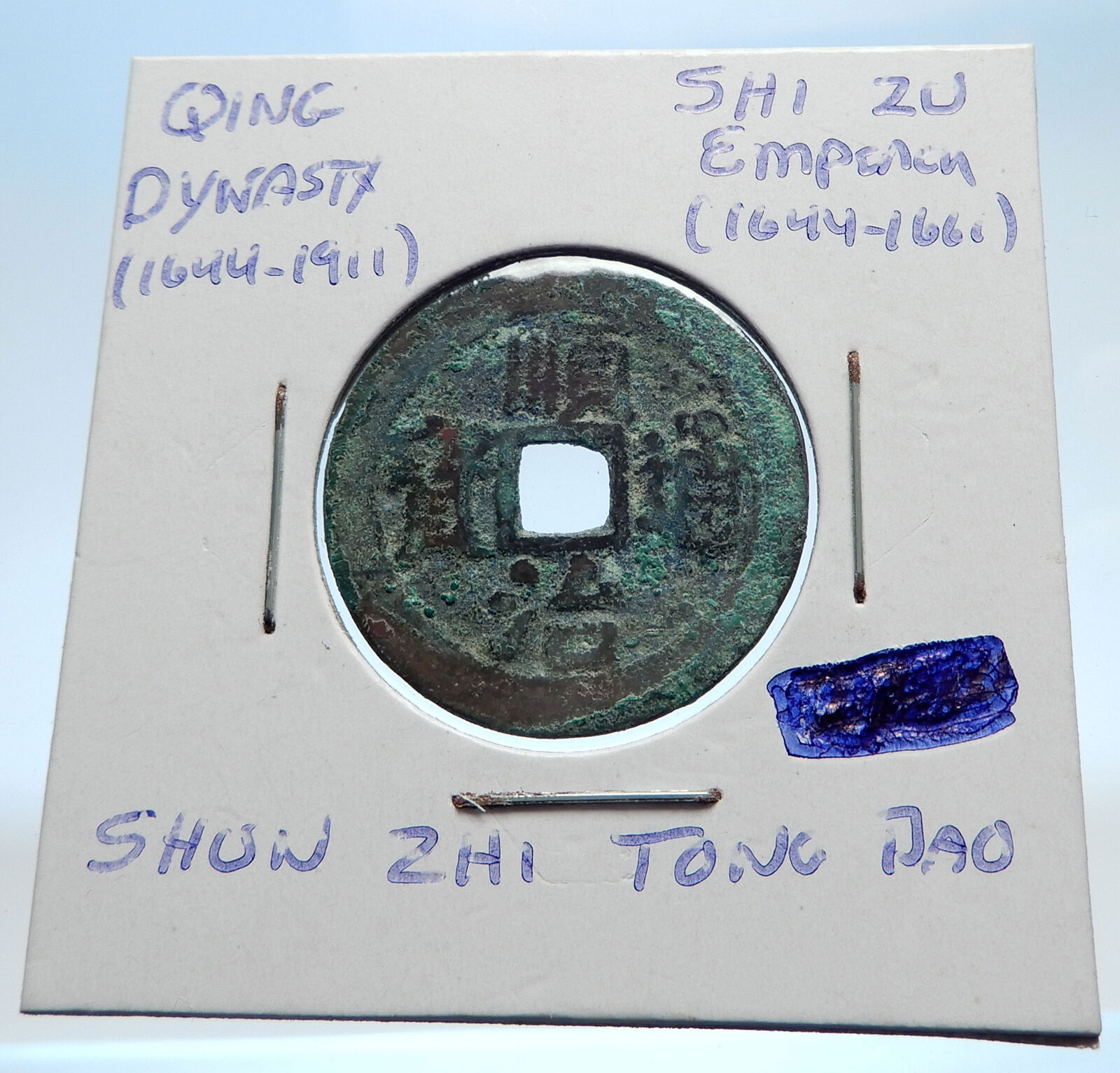|
China – Jin Dynasty (1115-1234 A.D.) – Puppet State of Qi
Pretender Liu Yu of Ch’i (Reign: 1130-1137)
Bronze Cash 24mm
Reference: Plate #68 Sch# 1075
Chinese Characters.
Coin Notes:
Qi (1130–1137), a puppet state of the Jin dynasty (1115–1234) in Central China. Liu Yu died in 1143. Extremely rare.
You are bidding on the exact item pictured, provided with a Certificate of Authenticity and Lifetime Guarantee of Authenticity.
The Jin dynasty, officially known as the Great Jin, lasted from 1115 to 1234 as one of the last dynasties in Chinese history to predate the Mongol invasion of China. Its name is sometimes written as Kin, Jurchen Jin or Jinn in English to differentiate it from an earlier Jìn dynasty of China whose name is identical when transcribed without tone marker diacritics in the Hanyu Pinyin system for Standard Chinese. It is also sometimes called the “Jurchen dynasty” or the “Jurchen Jin”, because its founding leader Aguda (reign 1115-1123) was of Wanyan Jurchen descent.
The Jin emerged from Taizu’s rebellion against the Liao dynasty (907-1125), which held sway over northern China until the nascent Jin drove the Liao to the Western Regions, where they became known as the Western Liao. After vanquishing the Liao, the Jin launched an over hundred-year war against the Song dynasty (960-1279), which was based in southern China. Over the course of their rule, the Jurchens of Jin quickly adapted to Chinese customs, and even fortified the Great Wall against the rising Mongols. Domestically, the Jin oversaw a number of cultural advancements, such as the revival of Confucianism.
The Mongols invaded the Jin under Genghis Khan in 1211 and inflicted catastrophic defeats on their armies. Though the Jin seemed to suffer a never-ending wave of defeats, revolts, defections, and coups, they proved to have tenacity. The Jin finally succumbed to Mongol conquest 23 years later in 1234.
Name
The Jin dynasty was officially known as the “Great Jin” at that time. Furthermore, the Jin emperors referred to their state as Zhongguo (中國) like some other non-Han dynasties. Non-Han rulers expanded the definition of “China” to include non-Han peoples in addition to Han people whenever they ruled China. Jin documents indicate that the usage of “China” by dynasties to refer to themselves began earlier than previously thought.
History
The Jin dynasty was created in modern Jilin and Heilongjiang by the Jurchen tribal chieftain Aguda in 1115. According to tradition, Aguda was a descendant of Hanpu. Aguda adopted the term for “gold” as the name of his state, itself a translation of “Anchuhu” River, which meant “golden” in Jurchen. This river known as Alachuke in Chinese, was a tributary of the Songhua River east of Harbin. The Jurchens’ early rival was the Khitan-led Liao dynasty, which had held sway over modern north and northeast China and Mongolia, for several centuries. In 1121, the Jurchens entered into the Alliance Conducted at Sea with the Han Chinese-led Northern Song dynasty and agreed to jointly invade the Liao dynasty. While the Song armies faltered, the Jurchens succeeded in driving the Liao to Central Asia. In 1125, after the death of Aguda, the Jin dynasty broke its alliance with the Song dynasty and invaded north China. When the Song dynasty reclaimed the southern part of the Liao where Han Chinese lived, they were “fiercely resisted” by the Han Chinese population there who had previously been under Liao rule, while when the Jurchens invaded that area, the Han Chinese did not oppose them at all and handed over the Southern Capital (present-day Beijing, then known as Yanjing) to them. The Jurchens were supported by the anti-Song, Beijing-based noble Han clans. The Han Chinese who worked for the Liao were viewed as hostile enemies by the Song dynasty. Song Han Chinese also defected to the Jin. One crucial mistake that the Song made during this joint attack was the removal of the defensive forest it originally built along the Song-Liao border. Because of the removal of this landscape barrier, in 1126/27, the Jin army marched quickly across the North China Plain to Bianjing (present-day Kaifeng). On 9 January 1127, the Jurchens ransacked Kaifeng, the capital of the Northern Song dynasty, capturing both Emperor Qinzong and his father, Emperor Huizong, who had abdicated in panic in the face of the Jin invasion. Following the fall of Bianjing, the succeeding Southern Song dynasty continued to fight the Jin dynasty for over a decade, eventually signing the Treaty of Shaoxing in 1141, which called for the cession of all Song territories north of the Huai River to the Jin dynasty and the execution of Song general Yue Fei in return for peace. The peace treaty was formally ratified on 11 October 1142 when a Jin envoy visited the Song court.
Having conquered Kaifeng and occupied North China, the Jin later deliberately choose earth as its dynastic element and yellow as its royal color. According to the theory of the Five Elements (wuxing), the earth element follows the fire, the dynastic element of the Song, in the sequence of elemental creation. Therefore, this ideological move shows that the Jin regarded the Song reign of China was officially over and themselves as the rightful ruler of China Proper.
|










